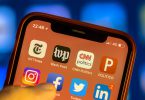When the mobile revolution arrived it hit the ground running and communication professionals quickly jumped on board. Unlike other forms of communication that have been around for a while, mobile is still in its formative years and therefore, there are boundless opportunities for creative mobile work. While some companies are implementing mobile elements successfully into their public relations and marketing campaigns, other companies are running into obstacles that cause them to rethink their strategy or make significant improvements in the coming year.
In this week’s PRSA “Friday Five” post — an analysis of the week’s biggest public relations and business news and commentary — delve into mobile developments and look at how companies are integrating mobile elements into strategic campaigns that garner media buzz and generate consumer awareness far beyond what some companies even expected. We also explore the different challenges with going mobile and how companies must up their game to compete in an ever evolving mobile age.
The Digital Personal Assistant Problem Siri Still Hasn’t Solved (Fast Company)
Fast Company’s David Zax recently interviewed Ilya Gelfenbeyn, CEO of Speaktoit (the top rated virtual assistant on Android) and an authority on natural language processing. With mobile technology being relatively new, Zax wanted to know how long it would be until consumers are able to talk to Siri using a similar language that they use with friends, taking the conversation to a more casual level. Gelfenbeyn explains that there is still a long way to go before we see this improvement but ultimately all of this hard work will lead to a “natural processing engine that will take into account conversation context like location, dialogue history, and user preferences.” For more of this interview and for the Fast Talk interview series, click here.
The Campaign to Digitize Your Wallet Is Intensifying (The New York Times)
Square is a technology start-up that lets you pay for items with a smartphone. This week, Starbucks partnered with the company to create another payment option for the digitally savvy consumer. While the idea of mobile payments is innovative, the challenge remains in convincing consumers that mobile wallets are safer and more convenient than using cash or credit, especially with the looming threat of identity theft. The partnership will certainly help Square gain more exposure but the company still has a long way to go before it becomes a mainstream replacement for the traditional wallet. Other companies that have introduced mobile wallets include Google, GoPago and Scvngr, and while mobile seems to be the way of the future for a number of industries, mobile wallets and payments (for now) are still a hard sell.
Mobile Making A Splash At The 2012 Olympics (Business 2 Community)
The 2012 Olympics have been deemed by many as “the first real-time Games” With 4.9 billion global viewers that have access to coverage across multiple NBC platforms, including 3,500 hours of live coverage on nine television channels. In addition all 32 sports stream live online via NBC Olympics Live Extra and mobile applications. Most people who are stuck at work all day are unable to watch the Games on television, therefore the mobile app becomes quite useful, so much so “that NBC’s video streaming of the 2012 London Olympic Games so far has produced 64 million views across all devices, 182% more than for the 2008 Beijing Games. But the most notable gains have been on mobile, which has accounted for 45% of all online viewing of the event.” While these numbers speak highly for the NBC’s mobile marketing campaign, there are issues that arise during a high traffic event such as the Olympics. With the success of the 2012 Olympics in London, NBC has their work cut out for them in preparation for the 2016 Games in Rio.
Romney Campaign Promotes ‘Mitt’s VP’ App with Mobile Search Ads (Ad Age)
For those who want to keep tabs on Mitt Romney’s potential running mate, there’s an app for that. The Romney campaign began promotion of the app through Google search ads and Facebook newsfeed ads targeted to mobile users. Searches on iPhones and Android devices for possible top choices including Chris Christie, Condoleezza Rice and Tim Pawlenty automatically generate an ad with text that reads “Download Mitt’s VP App & Be the First to Know!” Some say this decision to go mobile may be focused on generating media buzz. The initiative to “go mobile” is fairly targeted since half of U.S. mobile subscribers don’t own smartphones. Ultimately this may alienate a number of voters who do not own smart devices with the capacity to download mobile apps.
East Coast vs. West Coast Mobile Shoppers: What Makes Them Click? (Mashable)
Like most communication functions, advertising has been infected by the mobile bug. Consumers are buying into to mobile ads that can help them save money and enhance their shopping experience. Sense Networks, a company that extracts mobile location data for predictive analytics in advertising, pulled mobile click through rates (CTR) to get a sense of what makes consumers click different ads. With this data, they compared the shopping habits of East Coast and West Coast consumers. Here are a few interesting statistics that came from this research:
- East Coast mobile shoppers were most likely to click on ads for optical and eyewear deals.
- Overall West Coast consumers had a 24% higher CTR on health and fitness deals than East Coast mobile users.
- East Coast consumers are 26% and 18% more likely to click on nightlife and restaurant deals than West Coast shoppers, respectively.
- For West Coasters, the highest CTR were found in categories such as manicure and pedicure treatments and Pilates classes.
Nicole Castro is the public relations associate at the Public Relations Society of America.







[…] my brain around. I envision lots of ideas but not many of a practical nature. This week’s “Friday Five” from PRSA is dedicated to current happenings in mobile marketing. It offers a nice instant survey of current […]